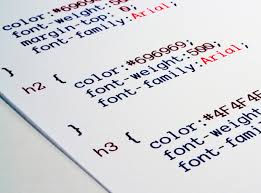I hate to visit websites that takes more than 3 minutes to
load. Time is money and most people will shun away from your website if your
site has a terrible loading speed. Most online shoppers and web visitors will
not visit a website for the second time if they experienced a slow and maybe
unresponsive website. Most research have shown that most online shoppers will
stay on websites which load under 2 seconds. They really mean business.
 |
| image source 3dprint.com |
Worry no more because I’m here to teach how best you can
speed up your website load time. These are very easy steps which can be done
without any hassle.
Before I begin I want to talk about some the benefit you can
enjoy by increasing your website load time.
Reason Why You Should Improve Website Load Time
Why do you think most online giant companies like Amazon and
EBay are investing so much to improve the overall speed of their websites? The
answer is simple to increase revenue and stay in business.
Spending some time to optimize the speed of your website
shouldn’t be a new problem to you. There are great values you can enjoy and
some of them include:
1. You are able to enjoy an increase in revenue
2. Your conversion rate increases
3. You are able to face competition and also stay in
business for a long period.
4. Improves your search engine ranking as well.
How To Speed Up Your Website Load Time
1. Reduce HTTP Requests
Before your browser displays any content, it makes some
request to the web server. The web browser says, hey web server I need the HTML
for this website, the CSS files, the JavaScript files, images, videos and any
other files.
All these resources the web browser downloads takes some
micro-seconds to download. So increasing the number of resources for your
website means increasing the number of seconds the browser takes to download.
To solve this problem:
1. Reduce the number of resources for your web pages
2. Combine your CSS files into one
3. If possible insert images using CSS to reduce the size of
your HTML files
4. Place your JavaScript files and Scripts at the bottom of
your HTML files in order to download faster
2. Enable Compression
Compressing your web page resources can help increase the
speed of your website. In fact Google even recommends compressing your website
files. Doing so reduces some kilobytes which in return improves the loading
time of your website.
This step can be achieved by zipping your resources using a
tool called Gzip. The good news is that most web servers support it and all
browsers have the capabilities to handle compressed websites with ease.
To learn more about Gzip compression and how to enable it on
your server read this article on GTmetrix
3. Using Browser Caching
Browser caching is a temporary storage of static web page
resources like images, CSS and JavaScript files on the user’s hard disk. What
this does is to store some of web files the first time a visitor accesses your
website and for subsequent visits the browser simply uses the stored files
without making any HTTP request. In effect reduces calls to your web server and
also speeds up your website.
If you update your website once in every month then you will
probably set the expiring date to just month. To learn more and how to enable
browser caching visit page on GTmetrix
4. Minify Your Web Page Files
One way of speeding up your website is by minifying some of
your resources and even Google applauds it. The spaces, indentations and line
breaks you insert in your codes also increase the size of your files. Minifying
your resources deletes the spaces, line breaks and indentations in your codes
to reduce their sizes for faster download.
There are a lot of tools you can use to achieve this:
To minify your CSS files you can try any of these online
tools
To minify your JavaScript files you can try any of these online
tools
5. Optimizing Your Web Images.
Images play important roles in on our web pages but they can
also be a threat to your website loading time. There are ways of optimizing
images and some of them include
1. Reducing the size of images. There several image
processing tools out there that can help you accomplish this task.
2. Crop your images to the size you want to use. Doing so
prevents the browser from downloading huge image size and later compress them
to the size you want on your page.
3. Use JPEG and PNG image formats.
6. Writing CSS The Right Way
There is no doubt CSS gives us the power to style our web
page the way we want. But this same power can hurt you if you do not use the
right way. Inline styling are great when used for some small basic styling but
relying solely on them can have a negative on your website speed.
To increase your website speed time
Avoid using too much inline styles and inline tag styling
because it increase the size of your HTML files.
Use external style sheets which load faster and very easy to
update too.
7. Avoid The Number Of Plugin You Use
Using lots of plugins on your website slows down its speed
and sometimes crashes. If possible limit the number of plugins you use to
improve the speed of your site. Deactivate any plugin you do use on your
website.
Conclusion
Implementing these methods of speeding up the load time of
your website will improve the way your visitors interact with your website. It
will be very sad to lose your loyal visitors or clients because of your slow
website. Always use Google’s speed test tool and Yahoo’s YSlow to monitor the load
time of your website. I wish you the best as you improve your website.



















